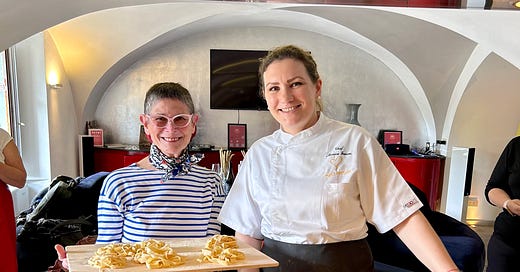Bonjour! Bonjour! I say this because I’m in the south of France even if I’m writing about the south of Italy.
Sometimes things work out. Even improbable things. Like saying, “I’d love to go to Italy,” and then being invited to Italy the next day.
The longing for Italy burbled up while Michael and I were watching “Shape of Pasta.” Have you seen it? (It was streaming on Roku and I think you can find it on YouTube.) It’s beautiful and touching and filled with a deep passion for Italy, tradition and pasta. In eight gorgeous 10-minute episodes (we watched them in one sitting), Evan Funke, the chef of Felix Trattoria in Los Angeles, goes to small villages in Italy in search of pastas that are in danger of extinction. These are pastas that are bound to a region and made by just a handful of people — sometimes just one person — who learned from the pasta makers who came before them. Like an archeologist digging for artifacts from a civilization long gone, Evan finds the masters, learns the skil…




